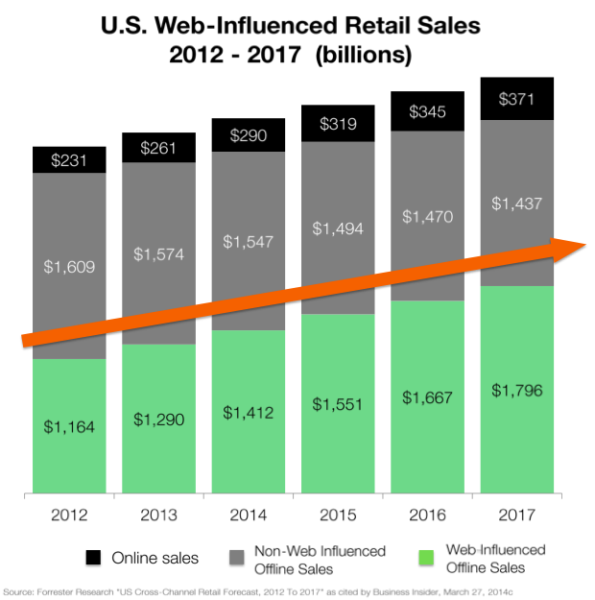How Marketers Can Drive Seasonal Sales With Intent Data
Each year, marketers look forward to seasonal promotions to drive a spike in sales. Prior to each event — whether it’s the Super Bowl, Mother’s Day or Back-to-School (BTS) — search and site activity send strong signals of buying intent, which is critical to new customer acquisition and retention. Understanding how, when and where your […]
Each year, marketers look forward to seasonal promotions to drive a spike in sales.
Prior to each event — whether it’s the Super Bowl, Mother’s Day or Back-to-School (BTS) — search and site activity send strong signals of buying intent, which is critical to new customer acquisition and retention.
Understanding how, when and where your customers are searching around seasonal events can trigger phenomenal results and put marketers at a clear advantage.
Be On Time
Timing is everything when it comes to getting in front of your audience.
In a survey from comScore, 39% of respondents claim to search and buy online, while 21% search in-store and buy in-store, and 13% search online and buy in-store.
Additionally, a study by Ipsos reveals that 51% of consumers gain inspiration in-store compared to 42% on computers and 55% split across tablets and smartphones.
In regard to research, 50% of respondents research on computers compared to 48% in-store, 34% smartphones, and 25% tablets. Ipsos data also showed that a majority (67%) of people still purchase in-store compared to 31% on computers and 21% and 18% on smartphones and tablets.
All of these stats suggest that there are many paths to purchase. Using available search trends and channel insights, marketers have an opportunity to predict where their customers are in the purchase funnel and influence them at the right moment.
For example, Magnetic data show that 65% of consumers will start researching back-to-school products by mid-July. The data also show spikes in searches for coupons on the weekends.
BTS advertisers must take advantage of this extended influence window and hit consumers with advertising while they are in the consideration stage. Waiting until closer to when school begins may result in missed opportunities (and thus, sales).
On the flip side, there are shorter purchasing windows for events like Halloween or Valentine’s Day – Magnetic’s data from 2014 showed that searches for jewelry peaked on February 3rd and February 12th.
Therefore, marketers should take advantage of this and focus their advertising efforts on the first week of February to get the most out of their campaigns. Marketing to audiences too far in advance may result in wasted media dollars.
The rapid growth of digital devices and the abundance of information available in real-time has created s situation in which there is no one standard path to purchase. Ipsos data points to the fact that consumers are getting inspiration for their next purchase, researching the product and completing their purchase across devices, in no particular order.
As a result, marketers should be armed and ready to market to their audience when the time is right, as early or as late as needed.
Identify Hidden Relationships
Data can reveal hidden relationships, the existence of which marketers may not be aware. Consumers commonly start searching for one item and end up purchasing another. Or, in some cases, there are seasonal events that trigger sales for another. Sometimes the correlation between the two products is intuitive, and sometimes it’s far from it.
Tax season is a prime example of how one seasonal trend impacts sales in other verticals.
Financial advertisers tend to come to mind when you think about the opportunities for tax season; however, 2014 tax data showed that 12.8% of consumers planned to use their return for a vacation and 10.7% planned to splurge on a larger purchase. eMarketer also points out that just 25% of total tax return dollars amounts to more than back-to-school ecommerce spending.
Additionally, obtaining information about what your customers are doing when they are not interacting with your brand directly is incredibly valuable for discovering hidden insights.
For example, one of Magnetic’s large CPG clients examined search activity from their site visitors, showing a high volume of search activity in the home exercise equipment category. Knowing what categories your customers are interested can help inform future campaign strategies.
Make It Personal
The more personal the ad, the more effective your campaign will be, and while marketers know this to be true, adoption rates are still lagging.
Dynamic creative offers advertisers the ability to transform generic messages into personalized advertising by changing the creative elements of the ad — i.e., headlines, ad message, background image, calls-to-action, etc. — based on specific audience attributes.
A survey from RocketFuel showed that 70% of their survey respondents still claim to often see ads for products in which they have no interest. There are a ton of seasonal events where marketers can use data to inform their creative, allowing messages to push products or services specific to an individual user.
Travel is a prime example – if you recently searched for spring break travel to the Bahamas then you should be delivered ads with the information you need. For each seasonal event, marketers should be harnessing personalized advertising strategies such as dynamic creative to drive sales.
Make Omni-Channel A Priority
Yearly events such as the holiday shopping season have very long purchasing windows, and with digital now trumping TV in time spent with media, it’s increasingly important to invest in omni-channel strategies to keep consumers engaged and drive sales.
In Forrester’s U.S. Cross Channel Retail Forecast, trends show that web-influenced offline sales are expected to overtake non-web influenced offline sales in 2015.
Also, in 2014, holiday e- commerce sales topped $100 Billion. Digital is playing a vital role in driving both on and offline sales and for a season as important as the holidays, retailers will need to adjust.
Retailers that come prepared with omni-channel strategies in 2015 will drive more sales than those that choose to take a simple route.
Summing It Up
Timing, hidden insights, personalization and omni-channel strategies will all give marketers a competitive edge. As marketers look for ways to drive sales around seasonal events, they should consider how data improves marketing campaigns and plays a role in driving sales.
Opinions expressed in this article are those of the guest author and not necessarily MarTech. Staff authors are listed here.
Related stories

